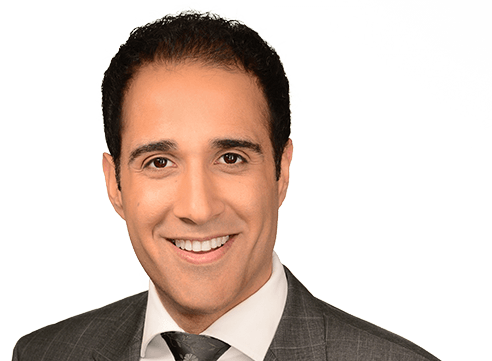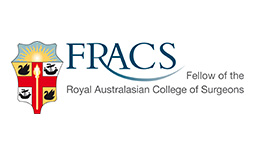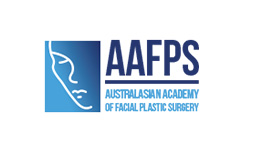Due to our beautiful, sunny weather two in three Australians will be diagnosed with skin cancer by the age of 70. More than 434,000 people are treated for one or more non-melanoma skin cancers in Australia each year and the number is rising faster than any other type of cancer. Although found on any part of the body, skin cancer often appears on the face, head or neck which can be disfiguring.
The treatment of skin cancer does not necessarily mean you will end up with horrible scarring or disfigurement. As a facial plastic and reconstructive surgeon, Dr Choroomi removes hundreds of skin cancers each year. This extensive experience coupled with advanced surgical techniques allows him to successfully remove skin cancer with minimal scarring, whilst preserving the form and function of the infected area.
Skin cancer / reconstruction
Types of Skin Cancer
There are three basic types of skin carcinomas:
Basal Cell Carcinoma is the least dangerous type of skin cancer; it tends to grow slowly and rarely spreads beyond its original site. Rarely fatal, BCCs are easily treated in its early stage but if left untreated it can grow deep beneath the skin and cause serious damage.
Squamous Cell Carcinoma tends to appear on the lips, face or ears and is known to spread. SCC s often more aggressive and can be more serious than Basal Cell Carcinoma.
Melanoma is the deadliest form of skin cancer as it can quickly spread to other parts of the body. Specialists in a melanoma unit typically treat this type of cancer as it typically requires chemotherapy and/or radiation therapy.
Diagnosis of Skin Cancer
Skin cancers typically present as a growth or sore on the skin that does not self heal. Dr Choroomi highly recommends patients who have a family history of skin cancer, high amounts of sun exposure, or fair skin to have regular skin check ups by their general practitioner or dermatologist. If you discover a lesion, your dermatologist or general practitioner will perform a punch biopsy to determine if the lesion is cancerous. If your skin lesion is diagnosed to be cancerous and non-melanoma in type, you will be referred to Dr Choroomi for treatment.
Consultation for Skin Cancer Removal with Dr Choroomi
If you’ve been recently diagnosed with non-melanoma type skin cancer the method of treatment is to surgically remove of the cancerous lesion. A consultation with Dr Choroomi includes a general evaluation of your overall health as well as:
- Examination of your lesion/ skin cancer
- Detailed measurements of the lesion/ skin cancer
- Evaluation of the lesion located in relation to facial structures such as the eyelids or nostrils and any important nerves or blood vessels on the head or neck region
- Photographs for operative planning and medical records
Each patient is unique therefor specific questions regarding surgical procedure, recovery risks, and results will be discussed in detail at your consultation to ensure you are fully informed and comfortable with your surgical plan.
Skin Cancer Removal
The treatment for non-melanoma skin cancer is typically surgical excision of the cancer and closure of the wound. Depending on the size of the lesion, it’s location and how much reconstruction is required, skin cancer removal procedures may be performed under local anaesthetic in one of Dr. Choroomi’s treatment rooms or under general anaesthetic in an accredited hospital.
The skin cancer is always excised along with an additional adjoining normal tissue border to ensure the complete removal of cancerous cells. During the procedure a pathologist may be present to inspect the excised lesion or it will be sent to a pathology lab to ensure the margins of removal are clear of all cancer. The reconstructive technique Dr Choroomi uses to close the wound is dependent on its size and location.
Primary Closure: If the cancer is small in size, the wound is simply sutured closed, forming a linear scar.
Skin Flap: If the cancer is larger, a skin flap can be designed to reconstruct the area. Skin is borrowed from an adjacent region to the lesion and is rotated and sutured to cover up the wound. This gives excellent texture and colour matching to where the lesion was previously excised.
Skin Graft: If the cancer is too large for a skin flap, a skin graft may be used. A thin layer of skin from behind the ear, neck, shoulders, or thigh is transferred to the wound and sutured in place. Initially the graft will look a different colour than the face or neck but slowly its colour will fade to match that of the face or neck.
Recovery
After skin cancer removal, gauze will be placed over your wound for protection during healing. If skin was removed from other parts of your body, this area will be bandaged as well. Antibiotics will be prescribed to help prevent against infection. Dr Choroomi will give you a detailed list of instructions regarding your recovery.
During your recovery you can expect minimal discomfort; any pain can be managed well with over the counter medication. You may experience some localised swelling and bruising, which should improve within a week of your procedure. You will likely be able to return to work within a few days. Dr Choroomi recommends you limit physical activity, excessive bending over or exercise for seven days after your procedure to allow your body to heal.
Dr. Choroomi will remove your sutures 5-10 days after your procedure depending on the location of the skin cancer and the extent of reconstruction. The wound is left alone to heal and the scar will improve over the course of several months.
Maintenance of Skin Cancer
It is important to schedule and keep regular follow-up examinations with your dermatologist or general physician. They will need to monitor your surgical site for any recurrence of your treated skin cancer. You are at increased risk of developing additional skin cancer and pre-cancers, early diagnosis and treatment is the best way to avoid complicated surgical procedures.









